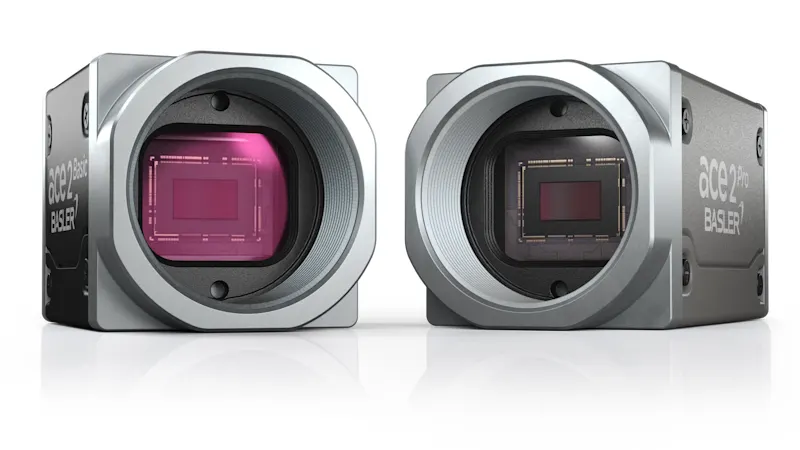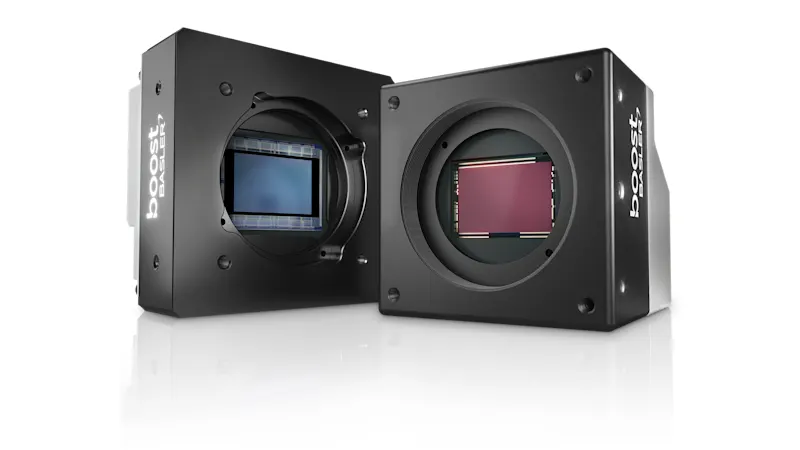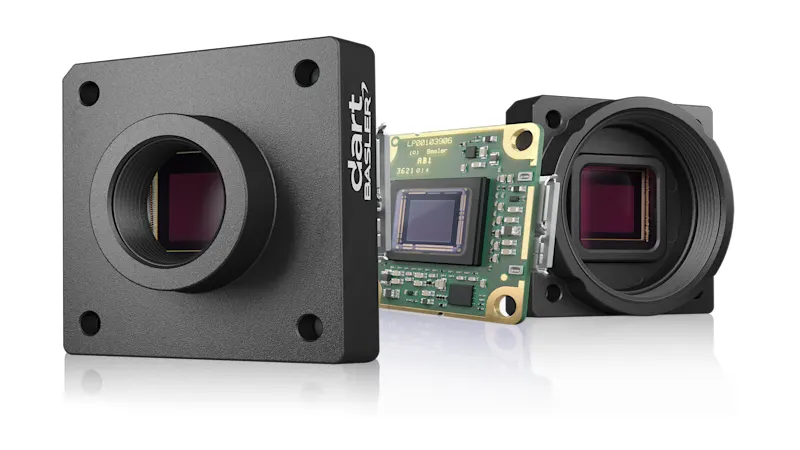Sony Pregius S: Advanced sensor technology
With the 4th generation of its successful CMOS sensors, Sony has once again raised the bar with the Pregius S line. After the introduction of the first generation with the IMX174 sensor, subsequent generations brought continuous advances in image quality and usability. A wide variety of applications in industrial image processing benefit from this.
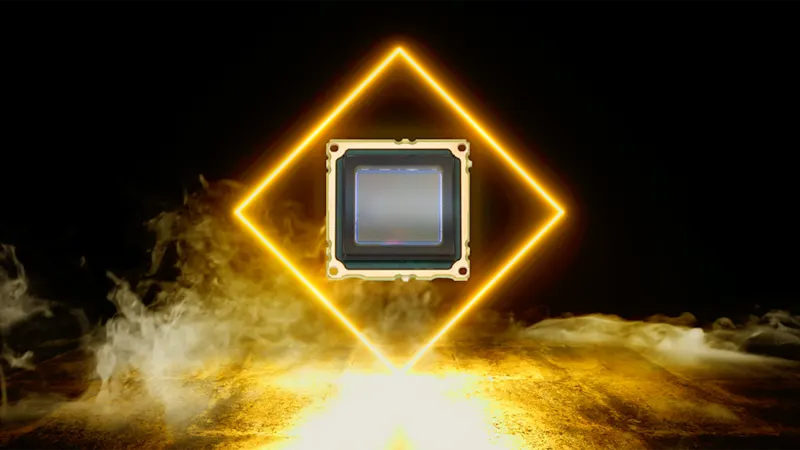
What's new about Pregius S?
In brief:
Small pixels + BSI sensor + global shutter => Wide resolution spectrum, compact format, and no motion artifacts
Advantages of the Pregius S sensors
The Pregius S sensors offer some improvements compared to their predecessor in terms of resolution, functionality, image processing quality and customer value.
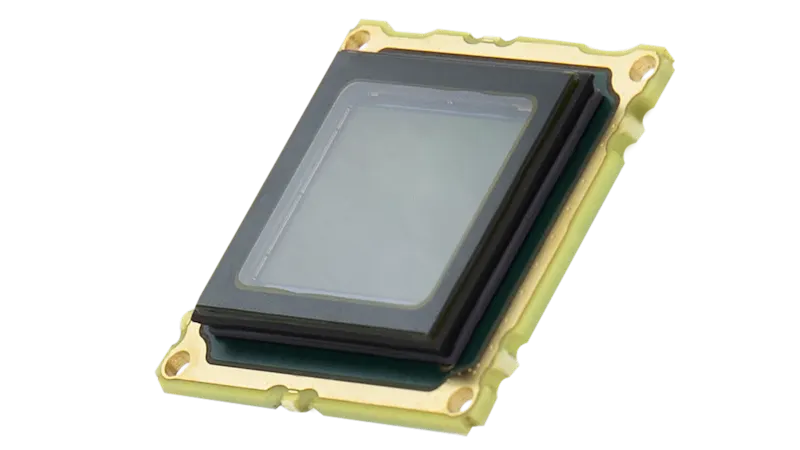
The most important features at a glance:
Low price per megapixel resolution: its small pixel size of only 2.74 μm allows for a higher number of pixels on the available sensor area.
Wide resolution range: from 5 MP to 24 MP, allows for more precise defect detection, even for the smallest components.
Fewer cameras per vision system: thanks to excellent quality and a top price-performance ratio, a 24 MP camera can replace two 12 MP cameras, for example.
Global Shutter: in combination with backside illumination (BSI), this ensures images without any motion artifacts—even at high speeds. Until now, BSI sensors were only available with rolling shutter (Sony STARVIS).
Sensor formats for versatile usee.g.:
16:9 for many applications in Traffic & Transportation
1:1 for Medical & Life sciences applications, e.g. microscopy
4:3 for maximum resolution at the limit of C-mount
Small pixel and sensor size: ideal for high-resolution cameras with compact designs
Powerful sensor functions, such as multiple ROI with up to 8x8 ROIs, which reduces data volumes and ensures faster frame rates.
Increased precision and productivity with Sony Pregius S sensors
Sony optimizes the pixel architecture of its BSI sensors and delivers key advantages: Even the smallest errors become visible, and productivity increases. This innovative technology enables more precise defect detection in a smaller space, while improving sensor sensitivity. In addition, the increased frame rate ensures more efficient inspection and shorter processing times in factory automation.
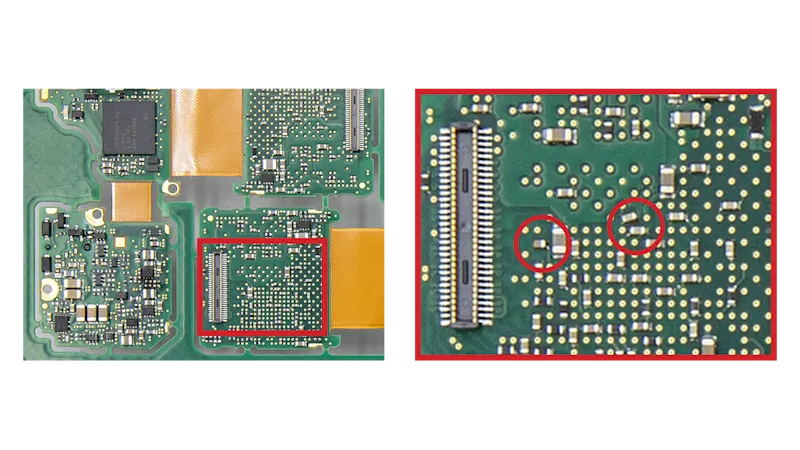
1. More precise detection of errors
Thanks to the modified pixel architecture of the BSI sensors, the light absorption of each pixel can be increased in a way that allows additional light to be absorbed and processed in a smaller space—so considerable sensor sensitivity is maintained despite the small pixel size. At the same time, the existing sensor area is used more efficiently by including a higher number of pixels within the space, which in turn significantly increases the resolution.
Result:a compact sensor solution with high resolution for precise inspection tasks.
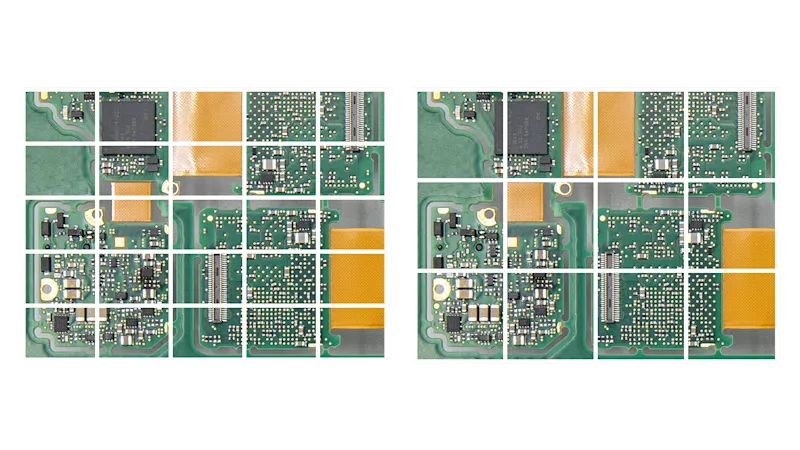
2. Increased productivity
The high-speed interface standard SLVS-EC (Scalable Low Voltage Signaling with Embedded Clock) developed by Sony increases the readout frame rate, provided that the camera interface can handle the bandwidth (e.g. CoaXPress). Compared to lower-resolution cameras, fewer frames are required in the same inspection area.
Result:a shorter processing time during ongoing inspection operations and an increased productivity systems in factory automation.
Pregius S – Higher resolution, lower price
By reducing the pixel size in the different generations of Pregius sensors, the resolution increases, while the price per megapixel decreases. The following table shows the development from the first to the 4th generation "Pregius S" and illustrates the technological progress.
Sensor Generation | Example: | Pixel size | Resolution | Price per MP |
|---|---|---|---|---|
1. Gen. | IMX174 sensor | 5.86 μm | 2.3 MP (1/1.2") | not good |
2. Gen. | IMX253 sensor | 3.45 μm | 12 MP (1.1") | good |
3. Gen. | IMX420 sensor | 4.5 μm | 7.1 MP (1.1") | neutral |
4. Gen. "Pregius S" | IMX541 sensor | 2.74 μm | 20 MP (1.1") | very good |
The Pregius S models: high-speed and standard
Sony offers its Sony Pregius S sensors in two speed settings, each with six resolutions.
The high-speed series delivers frame rates of 106-259 frames per second and is therefore well suited for cameras with a CoaXPress 2.0 or 10GigE interface:
IMX530 with 24 MP resolution (5328 x 4608 pixels)
IMX531 with 20 MP resolution (4512 x 4512 pixels)
IMX532 with 16 MP resolution (5328 x 3040 pixels)
IMX535 with 12 MP resolution (4096 x 3000 pixels)
IMX536 with 8 MP resolution (2840 x 2840 pixels)
IMX537 with 5 MP resolution (2448 x 2048 pixels)
The standard series delivers frame rates of 35-122 frames per second. These price-optimized sensors are therefore the ideal fit for cameras with a GigE or USB 3.0 interface:
IMX540 with 24 MP resolution (5328 x 4608 pixels)
IMX541 with 20 MP resolution (4512 x 4512 pixels)
IMX542 with 16 MP resolution (5328 x 3040 pixels)
IMX545 with 12 MP resolution (4096 x 3000 pixels)
IMX546 with 8 MP resolution (2840 x 2840 pixels)
IMX547 with 5 MP resolution (2448 x 2048 pixels)
IMX548 with 5 MP resolution (2448 x 2048 pixels)
Discover the possibilities of the Sony Pregius S sensors!
High resolutions make it easier to detect even the smallest defects in materials or on surfaces. By combining this maximum resolution in a compact C-mount format with high image and data readout rates, as well as distortion-free recording of moving objects thanks to the global shutter, the new BSI sensors of the Pregius S series provide compelling performance. Furthermore, these qualities support the steadily growing trends toward increased automation for Industry 4.0 and the miniaturization of components and systems.
